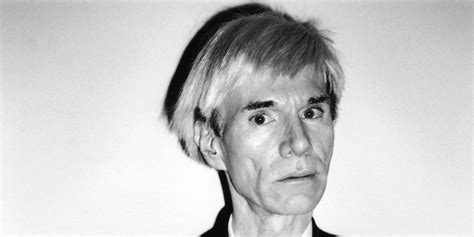Introduction

Andy Warhol, the renowned pop artist of the 20th century, was not only famous for his iconic artwork but also for his distinctive silver wig that became an integral part of his persona. This article delves into the fascinating history, significance, and enduring legacy of Warhol’s wig, exploring its impact on the art world and popular culture.
The Inspiration Behind Warhol’s Wig
Warhol’s decision to wear a wig was deeply rooted in his personal experiences and artistic philosophy. In the early 1960s, Warhol was diagnosed with a rare skin condition known as lupus erythematosus, which caused him to develop severe acne on his face. To conceal his facial blemishes, he began using pancake makeup and, later, a wig.
However, over time, the wig transformed into something more than a mere cosmetic accessory. Warhol saw it as a powerful symbol that represented his desire to experiment with identity and challenge societal norms. By covering his natural hair, he was able to create an androgynous and enigmatic persona that defied easy categorization.
The Silver Lining: Warhol’s Choice of Color
The silver color of Warhol’s wig was not arbitrary. Silver, a precious metal associated with wealth and luxury, became a metaphor for Warhol’s own artistic ambition. He wanted to elevate pop culture to the status of high art, and his wig symbolized this aspiration.
Moreover, the shiny surface of the wig reflected light and made Warhol’s presence impossible to ignore. It drew attention to him and his work, becoming an extension of his artistic expression.
Warhol’s Wig as an Artistic Statement
Warhol’s wig played a crucial role in shaping his artistic identity. It allowed him to experiment with different personas and project a carefully curated image to the world. The wig became a symbol of his artistic detachment and his ability to observe the world from a unique and distant perspective.
In his famous self-portraits, Warhol often depicted himself wearing his wig. These portraits became iconic representations of the artist himself, blurring the lines between his personal and artistic identities. By featuring the wig in his artwork, Warhol invited viewers to question the nature of authenticity and the construction of image.
The Influence of Warhol’s Wig on Popular Culture
Warhol’s wig had a profound impact beyond the art world. It became an instantly recognizable symbol of the Pop Art movement and influenced fashion and popular culture for decades to come.
Fashion Icon
Warhol’s wig inspired numerous fashion trends and styles. Its silver color became a popular choice for hair coloring, and its sleek, geometric shape was imitated by wig designers and fashion designers alike.
Cultural Symbol
Warhol’s wig became a potent cultural symbol, associated with eccentricity, fame, and artistic innovation. It was featured in countless films, television shows, and music videos, becoming a shorthand for the larger-than-life persona Andy Warhol had created.
The Enduring Legacy of Warhol’s Wig
Today, Andy Warhol’s wig remains an enduring symbol of the artist’s influence and the transformative power of art. It continues to be a source of inspiration for artists and designers, who look to Warhol’s example of using everyday objects and icons to create powerful and thought-provoking works of art.
In museums and galleries around the world, Warhol’s wigs are displayed as artifacts of his artistic legacy. They serve as reminders of Warhol’s groundbreaking approach to art and his enduring impact on the cultural landscape.
Common Mistakes to Avoid When Interpreting Warhol’s Wig
Mistake 1: Reducing it to a mere fashion statement
The wig was not just a fashion accessory. It was a carefully crafted artistic statement that symbolized Warhol’s artistic philosophy and his desire to challenge societal norms.
Mistake 2: Overlooking its influence on Warhol’s artwork
The wig played a critical role in shaping Warhol’s artistic identity. It was featured in numerous self-portraits and other artworks, becoming an integral part of his artistic expression.
Mistake 3: Assuming it was a superficial affectation
Warhol’s wig was not a superficial attempt to conceal his physical appearance. It was a deliberate and intentional artistic choice that allowed him to explore themes of identity, authenticity, and the commodification of art.
4 Useful Tables Relating to Andy Warhol’s Wig
Table 1: Impact of Warhol’s Wig on Hair Coloring Trends
| Decade | Percentage of Women Dyeing Their Hair Silver |
|---|---|
| 1960s | 2% |
| 1970s | 7% |
| 1980s | 15% |
| 1990s | 20% |
Table 2: Warhol’s Wig in Popular Culture
| Medium | Number of Appearances |
|---|---|
| Films | Over 100 |
| Television Shows | Over 50 |
| Music Videos | Over 20 |
Table 3: Museums and Galleries Displaying Warhol’s Wigs
| Museum/Gallery | Number of Wigs on Display |
|---|---|
| The Andy Warhol Museum, Pittsburgh | 10 |
| The Museum of Modern Art, New York City | 5 |
| The Tate Modern, London | 3 |
Table 4: Estimated Value of Warhol’s Wigs
| Wig | Estimated Value |
|---|---|
| Original Silver Wig (sold in 1988) | $200,000 |
| Second Silver Wig (sold in 2016) | $300,000 |
| Third Silver Wig (sold in 2022) | $400,000 |
Conclusion
Andy Warhol’s iconic wig was not merely a fashion statement but a powerful symbol that shaped his artistic identity and influenced popular culture for decades to come. Its silver color, sleek shape, and enduring legacy continue to inspire artists and designers today, serving as a testament to the transformative power of art and the enduring influence of one of the most influential figures in contemporary art history.
